In the ever-changing journey of life, our bodies constantly adapt to new challenges, but not all of these changes are immediately apparent. A subtle yet significant shift occurs in how our elders experience and regulate temperature. As the years add on, the body's ability to maintain a steady, comfortable core temperature can wane, often leaving many seniors feeling a persistent chill, even when others are comfortable. This isn't just a matter of reaching for an extra blanket; it's about understanding the deeper physiological changes and finding ways to provide warmth and comfort that cater to their unique needs. Let's explore why this cooling happens and how we can offer warmth and care to our seniors, turning their golden years into a time of comfort and joy.
The body's ability to produce heat is intrinsically linked to its metabolic rate. As we age, there's a natural decline in our metabolic rate. The processes that, once efficiently, generate heat become slower, leading to decreased warmth production. This can result in seniors feeling cold even when the surrounding environment seems comfortable to others.
Proper circulation is paramount for maintaining body temperature. As we age, the walls of our blood vessels lose their elasticity, and there can be a decrease in overall blood flow. Reduced circulation means less warm blood reaches the extremities, such as hands and feet, causing these areas to feel particularly cold.
The skin acts as a protective barrier, retaining heat and preventing cold from penetrating our body. Over time, the skin tends to thin, and the subcutaneous fat layer, which serves as insulation, diminishes. This makes seniors more susceptible to environmental colds as there's less natural insulation to keep the warmth.
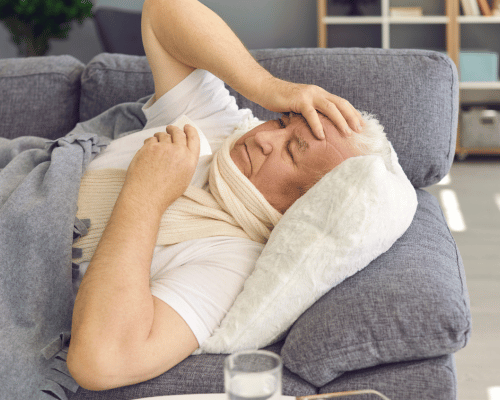
Certain hormones play a vital role in regulating our body's temperature. For instance, the thyroid hormone is crucial for metabolism and heat production. With age, conditions like hypothyroidism become more prevalent, leading to symptoms like cold intolerance.
While understanding the reasons is essential, finding tangible solutions to ensure our seniors stay warm and comfortable is even more crucial. Here are effective measures to consider:
When aiming to keep seniors warm, choosing clothing plays a pivotal role. High-quality clothing ensures comfort and offers the required warmth during colder periods. Here's a deeper dive into the importance and types of quality clothing suitable for seniors.
Layering clothing is a proven technique to trap body heat. By wearing multiple layers, you create air pockets between each layer. This trapped air gets warmed by the body's natural heat, creating an insulating effect. Thus, the more layers you have, the more trapped air, resulting in better insulation.
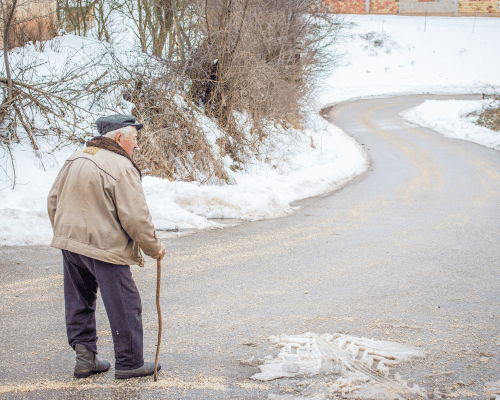
While clothing is fundamental, it's essential not to overlook minor details. Accessories, particularly those designed for cold climates, can significantly enhance warmth.
Creating a warm and comfortable environment for seniors requires more than just ramping up the thermostat. It's about understanding the nuances of room heating and making informed decisions. Here's an in-depth look at achieving and maintaining the ideal room temperature for seniors.
For seniors, an optimal room temperature isn't just about comfort; it's a health necessity. Consistent colds can exacerbate health issues, hinder mobility, and increase illness vulnerability. Thus, keeping living spaces adequately heated safeguards their well-being.
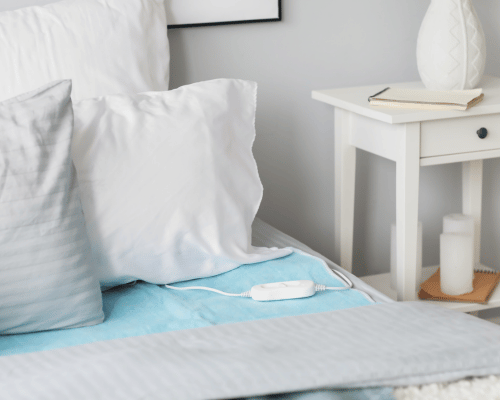
No matter the heating system or accessory is chosen, regular maintenance is essential. Cleaning filters, checking for worn-out parts, and ensuring no blockage ensure heating systems run efficiently and safely.
Maintaining body warmth in seniors isn't solely reliant on external factors like clothing or room temperature. Regular physical activity is instrumental in generating and maintaining internal body heat. Let's delve deeper into understanding the myriad benefits of staying active, especially for seniors.
Physical activity has manifold benefits, extending beyond just fitness. For seniors, consistent movement helps:
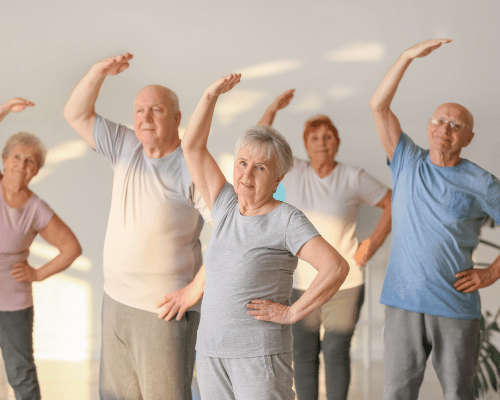
Starting a new exercise routine can be daunting, especially for seniors. However, the key lies in consistency. Begin with shorter durations, gradually increasing as stamina builds. Ensure the activities chosen are enjoyable, turning them into a daily routine rather than a chore.
The food we consume has a profound impact on how our bodies function. For seniors, maintaining body warmth goes beyond just clothing or external heating; it's closely linked to the nutrition they receive. Here, we'll dissect the relationship between a balanced diet and its role in fostering warmth.
A nutritious diet does more than just keep our bodies functioning optimally. It directly influences our internal temperature regulation. When we consume food, our body breaks it down—a process known as metabolism. This metabolic process releases energy, some manifest as heat, warming our bodies from within.
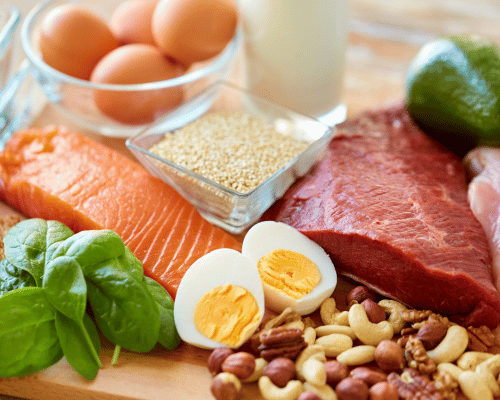
In colder months, consider incorporating foods that are naturally warming. Spices like ginger, cinnamon, and black pepper can elevate body temperature. Moreover, consuming meals at regular intervals can maintain a consistent metabolic rate, ensuring a continuous warmth supply.
Ensuring warmth and comfort for seniors often requires a holistic approach. While lifestyle measures like diet and physical activity play significant roles, the importance of routine medical examinations cannot be understated. Delve into medical check-ups and their role in safeguarding seniors against cold intolerance.

The human body offers signs and symptoms as indicators of underlying conditions. Cold intolerance, often dismissed as an age-related quirk, could sometimes be a symptom of more significant health concerns. Regular medical check-ups act as preventive measures, catching potential problems before they escalate.
Addressing health issues like anemia or hypothyroidism early has manifold benefits:
For seniors, adopting a proactive stance toward health is crucial. This means attending scheduled medical check-ups and being attuned to any changes in their bodies. Any persistent or unusual symptoms, even if seemingly minor, like cold intolerance, warrant a discussion with healthcare professionals.
Seniors often grapple with feeling colder due to various physiological changes. We can ensure their comfort and well-being by understanding these reasons and implementing effective measures. As a society, it's our responsibility to offer our seniors care, warmth, and understanding, ensuring they lead content and comfortable lives.

Looking into caregiving services may be overwhelming, but with BrightStar Care® of Salt Lake City East we ensure to make the process so much easier for you. We are here to provide you with the resources and support you need to take care of your loved one. We are confident that our team of professionals will assist you in looking for the right caregiver to take care of your loved one by keeping you in the loop and more. Contact us today to learn more about caregiving services! Our office is located at 5320 South 900 East Suite 280 Salt Lake City, UT, 84117 You may also call us at 801-438-3288. We look forward to hearing from you!
Age-Related Changes in Metabolism
The body's ability to produce heat is intrinsically linked to its metabolic rate. As we age, there's a natural decline in our metabolic rate. The processes that, once efficiently, generate heat become slower, leading to decreased warmth production. This can result in seniors feeling cold even when the surrounding environment seems comfortable to others.
Decrease in Circulation and Blood Flow
Proper circulation is paramount for maintaining body temperature. As we age, the walls of our blood vessels lose their elasticity, and there can be a decrease in overall blood flow. Reduced circulation means less warm blood reaches the extremities, such as hands and feet, causing these areas to feel particularly cold.
Thinning of the Skin and Fat Loss
The skin acts as a protective barrier, retaining heat and preventing cold from penetrating our body. Over time, the skin tends to thin, and the subcutaneous fat layer, which serves as insulation, diminishes. This makes seniors more susceptible to environmental colds as there's less natural insulation to keep the warmth.
Hormonal Changes and Their Impact
Certain hormones play a vital role in regulating our body's temperature. For instance, the thyroid hormone is crucial for metabolism and heat production. With age, conditions like hypothyroidism become more prevalent, leading to symptoms like cold intolerance.
How to Help Seniors Stay Warm
While understanding the reasons is essential, finding tangible solutions to ensure our seniors stay warm and comfortable is even more crucial. Here are effective measures to consider:
Invest in Quality Clothing
When aiming to keep seniors warm, choosing clothing plays a pivotal role. High-quality clothing ensures comfort and offers the required warmth during colder periods. Here's a deeper dive into the importance and types of quality clothing suitable for seniors.
Understanding the Importance of Layered Clothing
Layering clothing is a proven technique to trap body heat. By wearing multiple layers, you create air pockets between each layer. This trapped air gets warmed by the body's natural heat, creating an insulating effect. Thus, the more layers you have, the more trapped air, resulting in better insulation.
Materials That Make a Difference: Wool and Fleece
- Wool: Wool stands out as one of the best natural insulators. Its fibers are crimped and woven, forming a maze of tiny air pockets that trap body heat. This ensures that the person wearing wool remains warm. Moreover, wool can absorb moisture without feeling wet, providing additional comfort to the wearer.
- Fleece: Fleece, typically made from synthetic materials, is known for its lightweight nature and exceptional insulating properties. Its structure is designed to trap heat effectively. Moreover, fleece dries quickly and is breathable, making it an ideal choice for seniors.

Going Beyond Regular Clothing: The Significance of Thermal Accessories
While clothing is fundamental, it's essential not to overlook minor details. Accessories, particularly those designed for cold climates, can significantly enhance warmth.
- Thermal Socks: Feet often gets cold faster due to reduced circulation in many seniors. Thermal socks, made from materials designed to retain heat, can offer additional warmth and comfort.
- Hats: A significant amount of body heat can be lost through the head. A hat, primarily made from insulating materials like wool, can effectively retain this heat.
- Gloves: Hands, like feet, are prone to getting cold quickly. Gloves, especially those designed with thermal properties, can keep hands warm by reducing heat loss.
Maintain Optimal Room Temperature
Creating a warm and comfortable environment for seniors requires more than just ramping up the thermostat. It's about understanding the nuances of room heating and making informed decisions. Here's an in-depth look at achieving and maintaining the ideal room temperature for seniors.
The Significance of Room Temperature for Seniors
For seniors, an optimal room temperature isn't just about comfort; it's a health necessity. Consistent colds can exacerbate health issues, hinder mobility, and increase illness vulnerability. Thus, keeping living spaces adequately heated safeguards their well-being.
Choosing the Right Heating Systems
- Central Heating Systems: These systems heat the entire house or apartment. While they can be an initial investment, they offer consistent warmth throughout the living space. Choose one with a programmable thermostat when opting for a central heating system. This allows for temperature regulation based on specific needs and times of the day.
- Portable Room Heaters: Portable heaters are ideal for spaces or rooms that need supplemental heat. They're compact, easy to move, and can quickly warm up smaller areas. When purchasing a portable heater, look for features like adjustable thermostats, safety shut-off mechanisms, and energy efficiency.
- Infrared Heaters: These heaters warm objects and people directly rather than heating the air. They provide immediate warmth and are energy-efficient, making them an excellent choice for spot heating.

- Heated Blankets: A heated blanket can provide targeted warmth, especially during nights when temperatures drop. Modern heated blankets come with adjustable heat settings, ensuring seniors can find their comfort level. Additionally, they're energy-efficient, making them a cost-effective heating solution.
- Heated Floor Mats: For those who spend much time seated or in a specific home area, heated floor mats can be beneficial. They provide direct warmth to the feet and can be placed under desks or seating areas.
- Heated Chair Covers: These covers can be draped over chairs like heated blankets. They provide warmth directly to the body, ensuring comfort during prolonged sitting periods.
Regular Maintenance for Optimal Performance
No matter the heating system or accessory is chosen, regular maintenance is essential. Cleaning filters, checking for worn-out parts, and ensuring no blockage ensure heating systems run efficiently and safely.
Regular Physical Activity
Maintaining body warmth in seniors isn't solely reliant on external factors like clothing or room temperature. Regular physical activity is instrumental in generating and maintaining internal body heat. Let's delve deeper into understanding the myriad benefits of staying active, especially for seniors.
Why Physical Activity is Essential for Seniors
Physical activity has manifold benefits, extending beyond just fitness. For seniors, consistent movement helps:
- Boost Metabolism: As we age, our metabolic rate can naturally decline. Regular physical activities can help counteract this decline, keeping the metabolism active and efficient. An active metabolism aids in generating body heat, ensuring seniors feel warmer.
- Enhance Circulation: Good blood circulation ensures warm blood reaches all body parts, from the core to the extremities. Physical activity promotes heart health, effectively providing blood circulation and keeping warm extremities like hands and feet.
- Strengthen Muscles and Joints: Regular movement strengthens muscles and joints, which seniors need. This not only aids mobility but also generates heat during muscle activity.

Recommended Physical Activities for Seniors
- Walking: One of the simplest yet most effective forms of exercise, walking can be tailored to fit individual fitness levels. Whether a brisk walk in the park or a stroll around the neighborhood, walking promotes heart health, boosts metabolism, and aids circulation.
- Light Aerobics: Aerobic exercises elevate the heart rate, making them excellent for improving circulation and metabolic activity. For seniors, low-impact aerobic routines are ideal. These can include step aerobics with low risers, seated exercises, or dance-based aerobics tailored for older adults.
- Stretching and Flexibility Exercises: While these may not seem like high-intensity activities, stretching and flexibility exercises are crucial in maintaining joint health and muscle flexibility. Gentle yoga or Tai Chi can be excellent for seniors, promoting warmth through controlled, fluid movements.
- Strength Training: Strength training exercises can be modified for seniors using resistance bands or light weights. These exercises help in building muscle mass, which in turn aids in heat generation.
Incorporating Physical Activity into Daily Routines
Starting a new exercise routine can be daunting, especially for seniors. However, the key lies in consistency. Begin with shorter durations, gradually increasing as stamina builds. Ensure the activities chosen are enjoyable, turning them into a daily routine rather than a chore.
Nutritious Diet
The food we consume has a profound impact on how our bodies function. For seniors, maintaining body warmth goes beyond just clothing or external heating; it's closely linked to the nutrition they receive. Here, we'll dissect the relationship between a balanced diet and its role in fostering warmth.
The Connection Between Diet and Body Warmth
A nutritious diet does more than just keep our bodies functioning optimally. It directly influences our internal temperature regulation. When we consume food, our body breaks it down—a process known as metabolism. This metabolic process releases energy, some manifest as heat, warming our bodies from within.
Essential Nutrients That Boost Warmth
- Iron: Iron is pivotal in aiding blood circulation. It plays a central role in producing hemoglobin, a component of red blood cells responsible for transporting oxygen. Optimal oxygen transportation ensures better blood flow, keeping extremities warm. Iron-rich foods include leafy greens, fortified cereals, and lean meats.
- Protein: Protein-rich foods require more energy to break down, thus increasing the metabolic rate. This process generates heat, warming the body. For a protein-packed diet, incorporate sources like poultry, fish, tofu, beans, and lentils.
- Vitamins: Certain vitamins, notably B vitamins, are significant in energy production. They aid in metabolizing carbohydrates, proteins, and fats, producing energy and warmth. Whole grains, eggs, dairy, and lean meats are excellent sources.
Embracing Hot Beverages for Immediate Warmth
- Tea: Beyond its comforting aroma, tea, whether green, black, or herbal, offers a quick warmth boost. The warmth of the beverage, coupled with its natural compounds, can enhance metabolism and provide immediate comfort.
- Coffee: A beloved morning ritual for many, coffee not only awakens the senses but also warms the body. Its caffeine content can mildly elevate metabolic rates, contributing to internal warmth.
- Broth: Nutrient-dense broths, whether vegetable-based or bone broths, provide nourishment and warmth. They're easily digestible, ensuring quick absorption of essential minerals and vitamins that aid warmth.
Tailoring Diet for Seasonal Needs
In colder months, consider incorporating foods that are naturally warming. Spices like ginger, cinnamon, and black pepper can elevate body temperature. Moreover, consuming meals at regular intervals can maintain a consistent metabolic rate, ensuring a continuous warmth supply.
Routine Medical Check-ups
Ensuring warmth and comfort for seniors often requires a holistic approach. While lifestyle measures like diet and physical activity play significant roles, the importance of routine medical examinations cannot be understated. Delve into medical check-ups and their role in safeguarding seniors against cold intolerance.
The Imperative of Regular Health Screenings
The human body offers signs and symptoms as indicators of underlying conditions. Cold intolerance, often dismissed as an age-related quirk, could sometimes be a symptom of more significant health concerns. Regular medical check-ups act as preventive measures, catching potential problems before they escalate.
Spotting Conditions Leading to Cold Intolerance
- Anemia: Anemia, a condition where the body lacks adequate healthy red blood cells to transport oxygen efficiently, can lead to feelings of cold or numbness, especially in the extremities. A simple blood test during a routine check-up can detect anemia, enabling prompt intervention.
- Hypothyroidism: The thyroid gland regulates metabolism, which directly influences body temperature. Hypothyroidism, or an underactive thyroid, slows metabolism, often leading to cold intolerance. A regular thyroid function test can identify irregularities, paving the way for timely treatment.
The Cascade Effect of Timely Detection
Addressing health issues like anemia or hypothyroidism early has manifold benefits:
- Immediate Relief: Once diagnosed, conditions leading to cold intolerance can often be managed with medication or dietary adjustments, providing seniors with immediate relief from chronic cold sensations.
- Prevention of Complications: Early detection and intervention prevent potential complications. For instance, untreated hypothyroidism can lead to joint pain, obesity, or heart disease, emphasizing the need for routine screenings.
- Enhanced Quality of Life: Battling persistent cold can be draining. By addressing the root causes, seniors can enjoy an improved quality of life, participating actively in daily routines without the constant discomfort of feeling cold.
Staying Proactive with Health
For seniors, adopting a proactive stance toward health is crucial. This means attending scheduled medical check-ups and being attuned to any changes in their bodies. Any persistent or unusual symptoms, even if seemingly minor, like cold intolerance, warrant a discussion with healthcare professionals.Seniors often grapple with feeling colder due to various physiological changes. We can ensure their comfort and well-being by understanding these reasons and implementing effective measures. As a society, it's our responsibility to offer our seniors care, warmth, and understanding, ensuring they lead content and comfortable lives.

Contact BrightStar Care® Salt Lake City!
Looking into caregiving services may be overwhelming, but with BrightStar Care® of Salt Lake City East we ensure to make the process so much easier for you. We are here to provide you with the resources and support you need to take care of your loved one. We are confident that our team of professionals will assist you in looking for the right caregiver to take care of your loved one by keeping you in the loop and more. Contact us today to learn more about caregiving services! Our office is located at 5320 South 900 East Suite 280 Salt Lake City, UT, 84117 You may also call us at 801-438-3288. We look forward to hearing from you!
